Discover Stunning Cherry Blossom Paradise: Your Complete Guide to Kansai's Most Spectacular Hanami Destinations
Experience Japan's legendary sakura season across Osaka, Kyoto, Nara, and Hyogo's most breathtaking locations
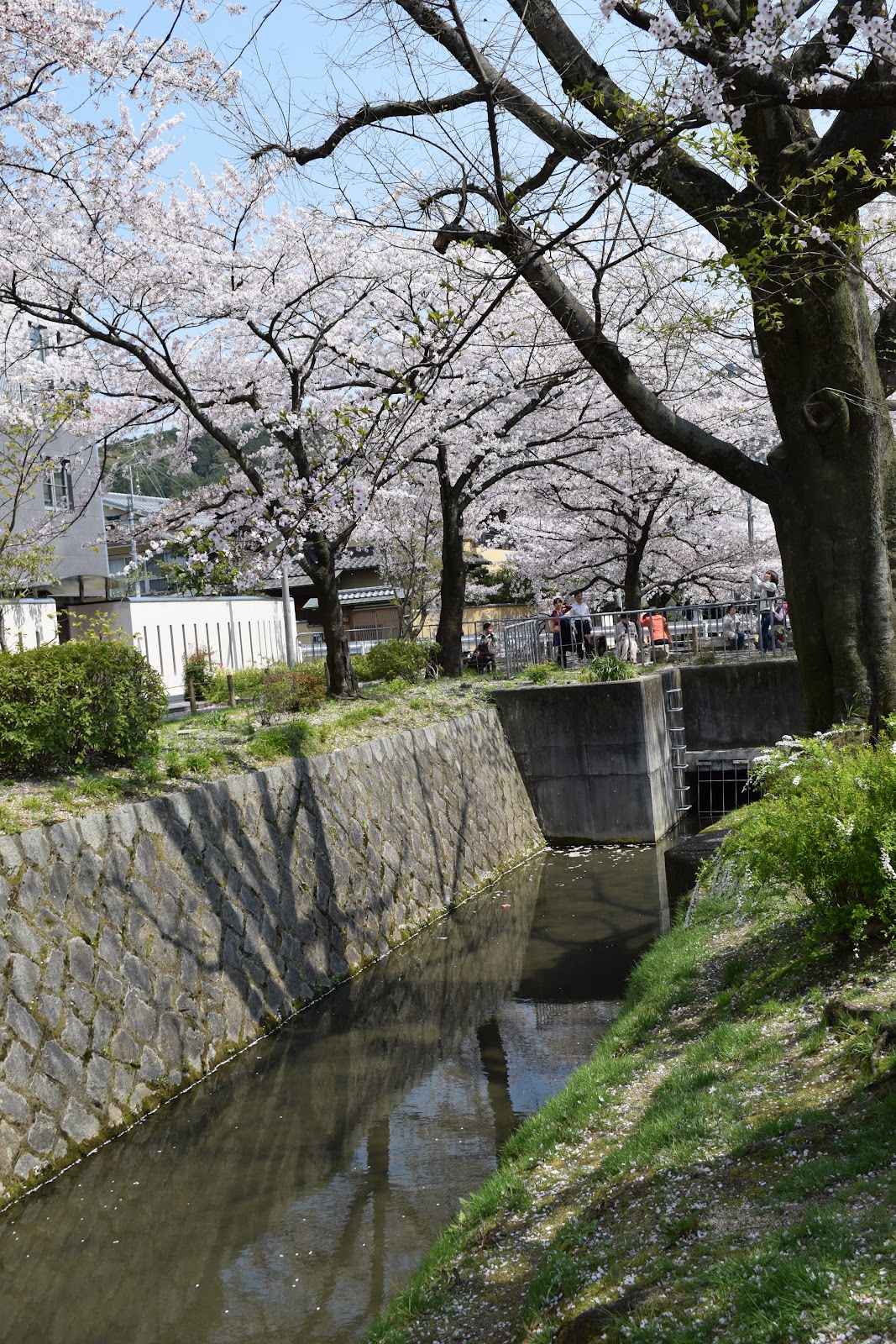
Spring in the Kansai region transforms into pure magic when cherry blossoms reach their peak, creating some of the world's most spectacular natural displays. This comprehensive guide takes you through the most stunning hanami (cherry blossom viewing) destinations across Osaka, Kyoto, Nara, and Hyogo, each easily accessible by train and offering unique experiences that capture the essence of Japanese spring culture.
Cherry blossom season represents far more than beautiful flowers - it embodies centuries of Japanese cultural tradition, inspiring poetry, art, and annual celebrations that bring communities together. The Kansai region particularly excels at blending historical architecture with natural beauty, creating landscapes where ancient temples and castles provide dramatic backdrops for delicate pink and white blooms.
Romantic Strolling Destinations: Where History Meets Natural Beauty
Philosopher's Path (Tetsugaku-no-michi), Kyoto
📍 Google Maps - Philosopher's Path
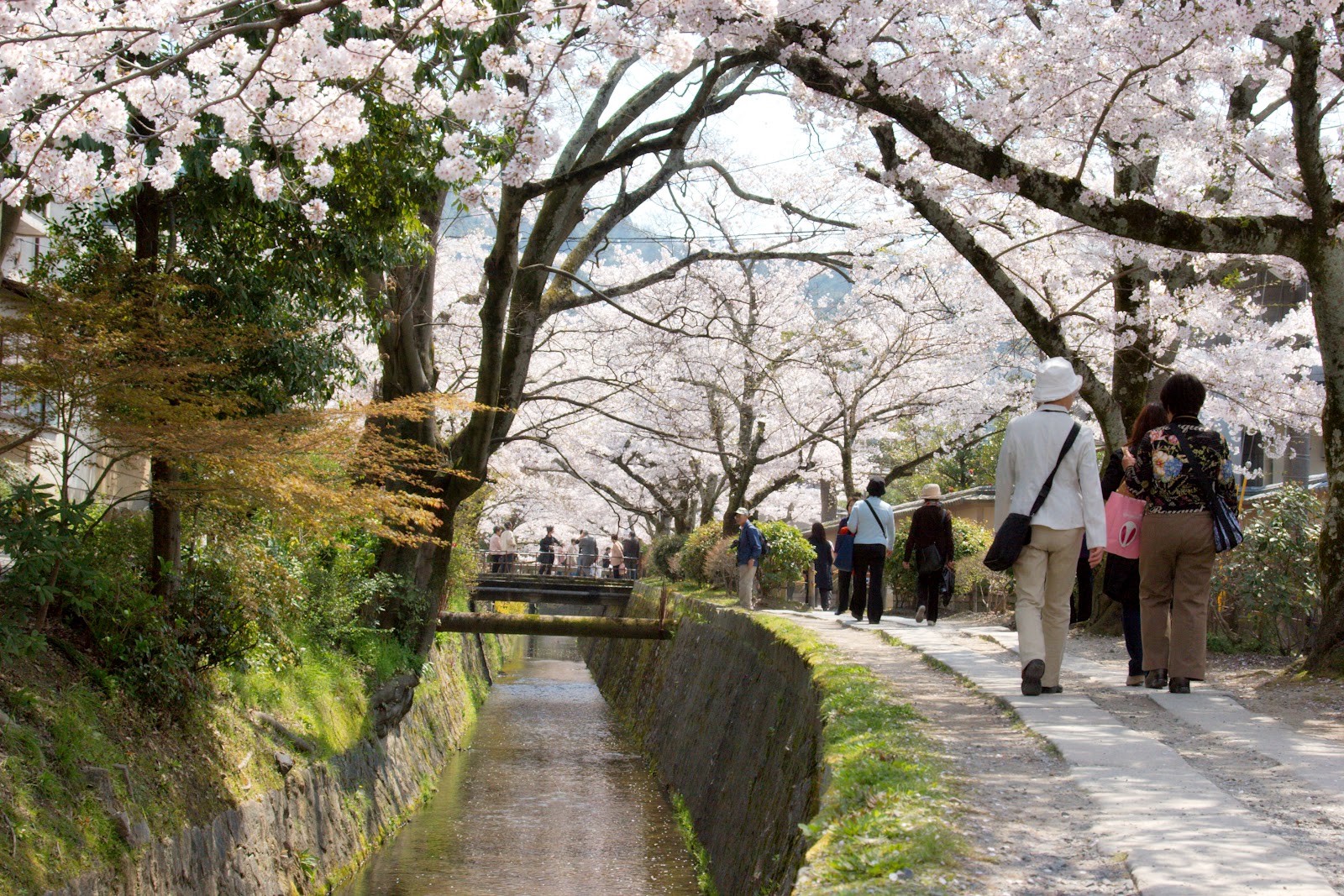
The Philosopher's Path stands as one of Kyoto's most enchanting experiences, where over 450 cherry trees create natural tunnels of blossoms along the historic Lake Biwa Canal. This 1.8-kilometer walking path, selected as one of "Japan's Top 100 Roads," transforms into a pink and white wonderland during peak bloom, offering an almost otherworldly strolling experience.
Named after philosopher Kitaro Nishida, who meditated while walking this route, the path embodies the perfect fusion of contemplation and natural beauty. Spring sunshine filtering through cherry blossom canopies creates dappled light patterns on the canal's surface, while petals drift gently downstream like nature's confetti.
The Complete Experience The Philosopher's Path serves as an ideal connection between some of Kyoto's most significant temples. Beginning near the silver-pavilioned Ginkakuji (Silver Pavilion) and ending near the impressive Nanzenji Temple, the walk combines spiritual heritage with natural splendor. Small galleries, traditional cafes, and artisan shops dot the route, providing perfect rest stops for contemplating the scenery.
Timing and Photography Peak viewing typically occurs from late March to early April, with early morning visits (before 8:00 AM) offering the most peaceful experience. The interplay of canal reflections, stone pathways, and overhead blossoms creates countless photography opportunities, particularly where ancient stone bridges cross the waterway.
Practical Information:
- Best Viewing Period: Late March to early April
- Optimal Timing: Early morning (7:00-9:00 AM) for fewer crowds
- Access: 10-minute walk from Ginkakuji-michi bus stop
- Duration: 45-60 minutes leisurely walk
- Highlights: Canal reflections, traditional architecture, temple connections
Mount Yoshino (Yoshinoyama), Nara Prefecture
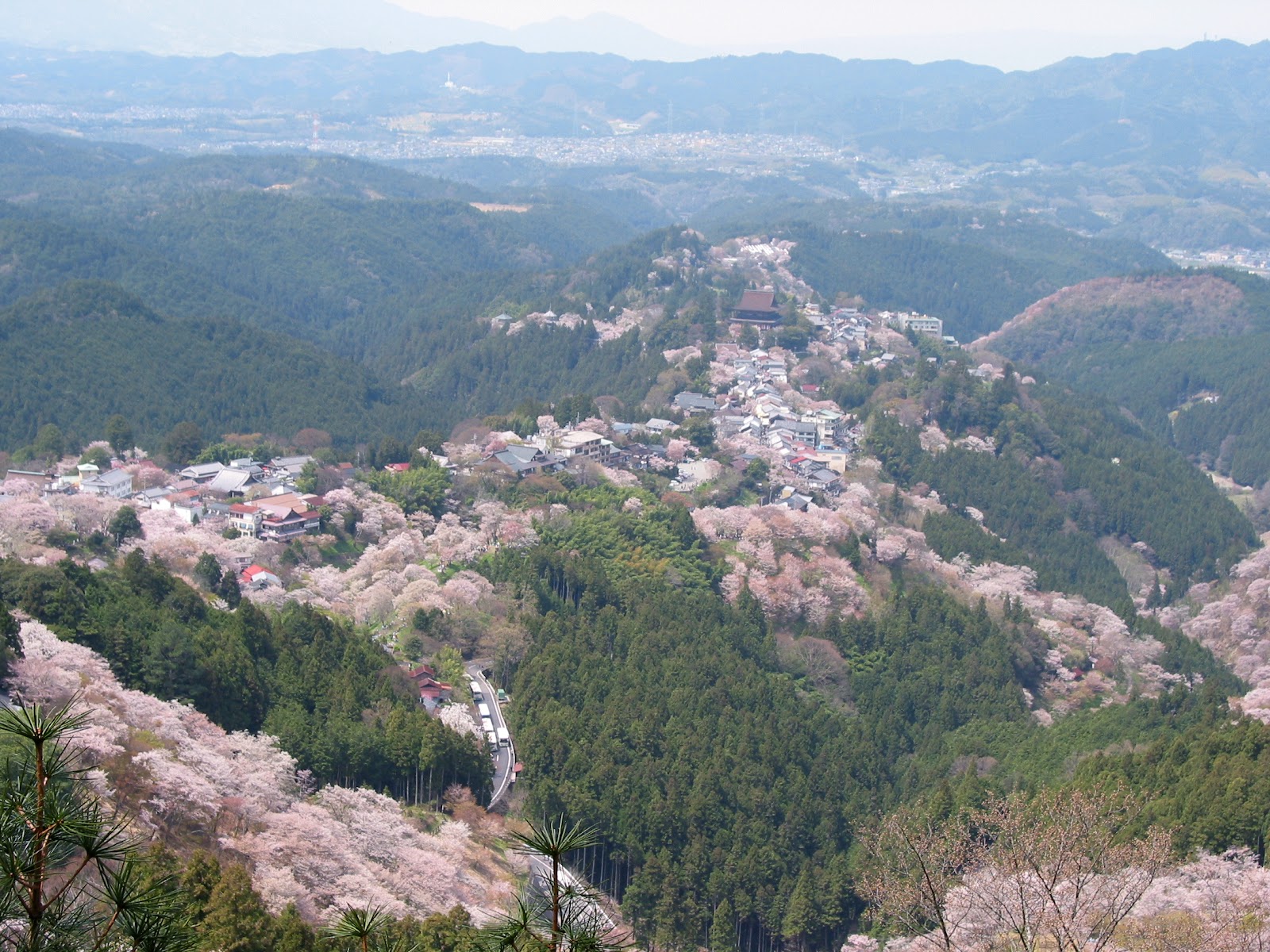
Mount Yoshino represents the ultimate cherry blossom experience in Japan, where approximately 30,000 mountain cherry trees of 200 varieties create what locals call "Hitome Senbon" - "a thousand trees at a glance." This UNESCO World Heritage site offers the most spectacular mass display of cherry blossoms anywhere in the world, covering the entire mountainside in cascading waves of pink and white.
The Staggered Blooming Phenomenon Mount Yoshino's unique topography creates an extended viewing season as blossoms open sequentially from the mountain's base to its summit over several weeks. From late March through late April, visitors can witness different elevation zones reaching peak bloom, allowing multiple visits to experience varying perspectives of this natural masterpiece.
Historical and Spiritual Significance This sacred mountain has inspired Japanese poetry for over 1,000 years, with its beauty celebrated in the ancient Manyoshu poetry collection. Historic temples and shrines, including the powerful Kinpusenji Temple and sacred Yoshino Mikumari Shrine, punctuate the landscape, creating spiritual focal points amid the natural splendor.
Hiking and Viewing Strategies The mountain divides into four main viewing areas: Shimo-senbon (lower), Naka-senbon (middle), Kami-senbon (upper), and Oku-senbon (inner). Casual hikers can enjoy the lower areas, while more adventurous visitors can ascend to the summit for panoramic views across the entire Yamato Plain, with cherry-covered mountains extending to the horizon.
Practical Information:
- Peak Season: Late March to late April (staggered by elevation)
- Access: Yoshino Station (Kintetsu Yoshino Line) + cable car or bus
- Hiking Duration: 2-4 hours depending on route
- Best Photos: Summit viewpoints for panoramic mountain views
- Cultural Sites: Kinpusenji Temple, Yoshino Mikumari Shrine
Togetsukyo Bridge, Arashiyama, Kyoto
📍 Google Maps - Togetsukyo Bridge
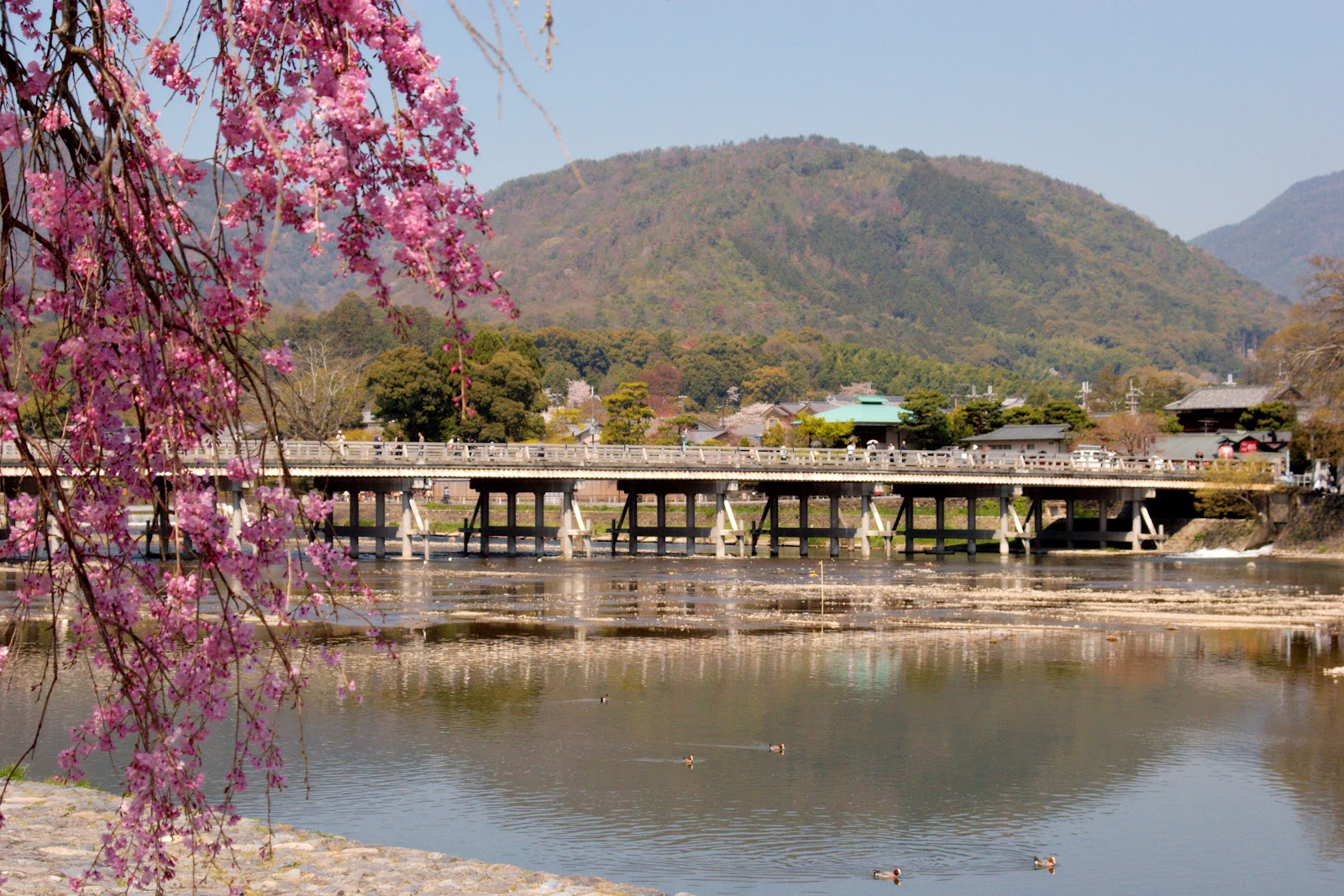
The iconic Togetsukyo Bridge in Arashiyama creates one of Kyoto's most photographed cherry blossom scenes, where approximately 1,500 trees including Someiyoshino, mountain cherry, and weeping cherry varieties frame the historic span across the Hozu River. This "Moon Crossing Bridge" provides the perfect vantage point for experiencing Arashiyama's comprehensive spring transformation.
Multiple Perspectives The entire Arashiyama district becomes a cherry blossom wonderland, with riverside walking paths offering varying viewpoints of the blossoms and bridge combination. From the bridge itself, visitors enjoy upstream and downstream vistas of cherry-lined riverbanks, while the surrounding mountainsides provide elevated perspectives of the scene below.
Cultural Integration During cherry blossom season, traditional food stalls create a festival atmosphere that attracts both locals and international visitors. The combination with nearby attractions like the famous bamboo grove and historic Tenryuji Temple allows for full-day cultural immersion that extends far beyond simple flower viewing.
Sunset Magic The bridge's silhouette against sunset skies, framed by illuminated cherry blossoms, creates some of Japan's most romantic scenery. Evening visits reveal why this location has inspired artists and poets for centuries.
Practical Information:
- Best Viewing: Late March to early April
- Peak Times: Sunset for silhouette photography
- Combined Attractions: Bamboo Grove, Tenryuji Temple
- Access: 5-minute walk from Arashiyama Station
- Festival Atmosphere: Food stalls and events during peak season
Perfect Picnic Paradises: Family-Friendly Cherry Blossom Destinations
Osaka Castle Park
📍 Google Maps - Osaka Castle Park
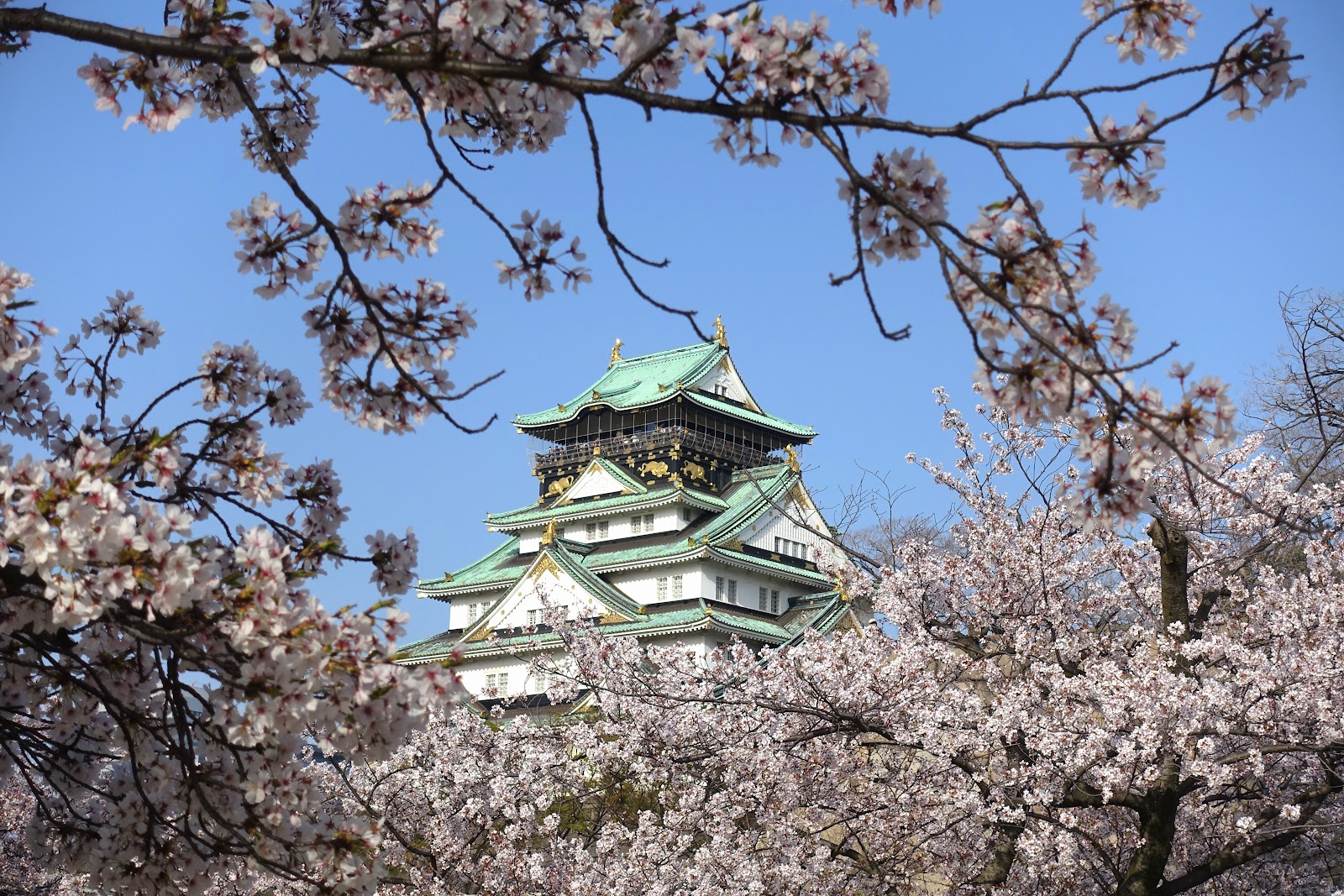
Osaka Castle Park epitomizes the perfect fusion of historical grandeur and natural beauty, where thousands of Someiyoshino cherry trees transform the castle grounds into Osaka's premier hanami destination. The dramatic contrast between the castle's golden shachihoko (tiger-fish roof ornaments) and delicate pink and white blossoms creates one of Japan's most iconic spring scenes.
Strategic Viewing Areas The Nishinomaru Garden offers the most spectacular viewing experience, where carefully planned landscaping creates optimal sight lines between cherry trees and the reconstructed castle tower. Wide lawn areas throughout the park provide ideal picnic locations where families can spread blankets and enjoy traditional hanami celebrations while contemplating the historic fortress.
Accessibility and Convenience Just steps from JR Osaka Castle Park Station, this location offers unmatched convenience for international visitors. The park's comprehensive facilities, including restaurants, shops, and restrooms, eliminate the need for extensive picnic preparation while maintaining the authentic hanami experience.
Day and Night Experiences While daytime visits reveal the full majesty of castle and blossoms against blue skies, evening illuminations transform the scene into something magical. Specially positioned lighting creates dramatic shadows and highlights that enhance both the architectural details and the delicate blossom textures.
Practical Information:
- Peak Viewing: Late March to early April
- Best Access: JR Osaka Castle Park Station (2-minute walk)
- Facilities: Restaurants, shops, restrooms throughout park
- Special Events: Night illuminations, cherry blossom festivals
- Picnic Areas: Nishinomaru Garden, main castle grounds
- Photography: Golden hour for castle/blossom contrast
Nara Park
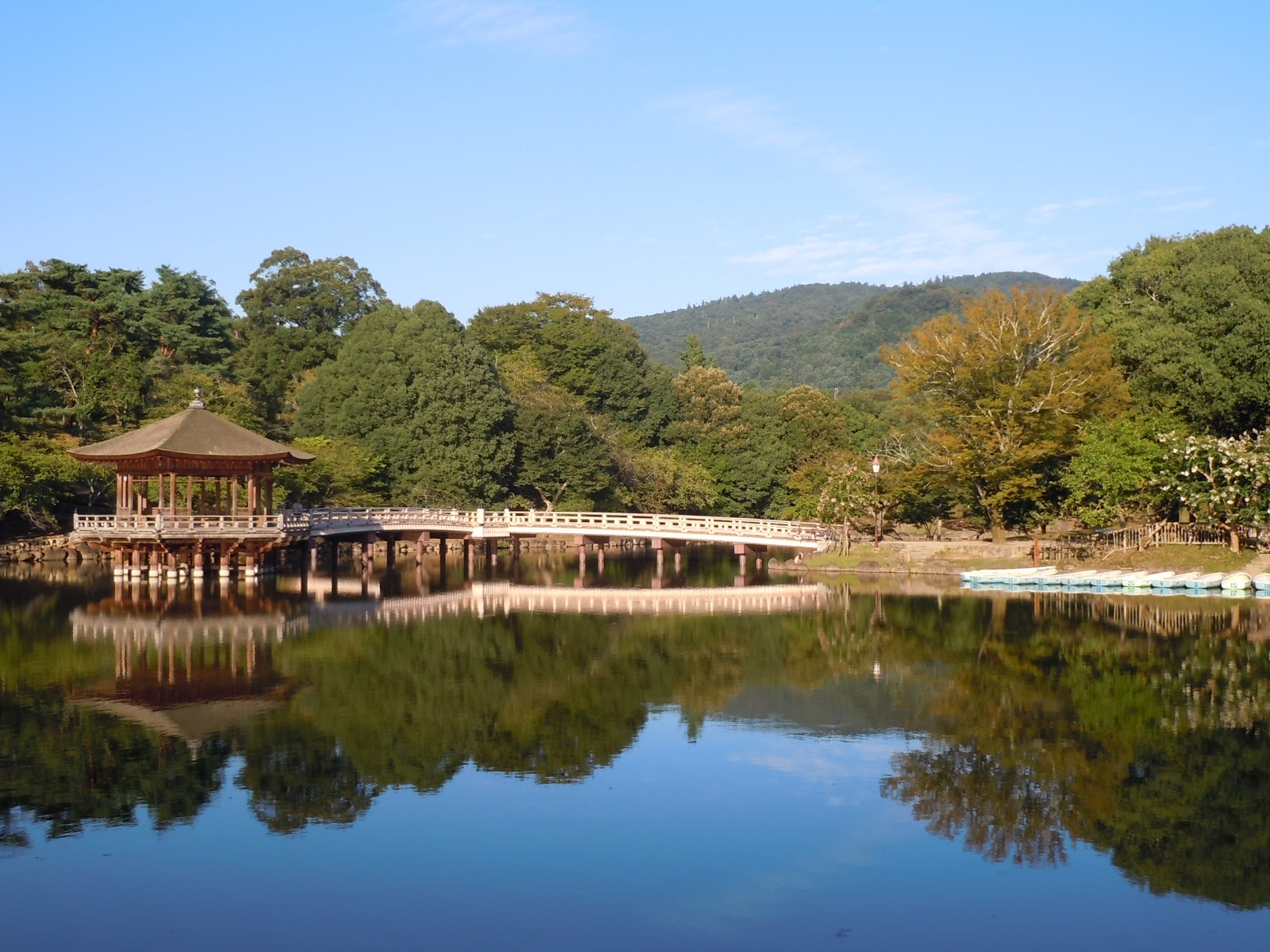
Nara Park offers Japan's most unique cherry blossom experience, where approximately 1,700 cherry trees of various species create a natural wonderland shared with over 1,000 sacred deer. This extraordinary combination of natural beauty, wildlife interaction, and historical significance creates memories impossible to replicate anywhere else in the world.
The Deer Connection Watching deer graze peacefully beneath falling cherry petals represents one of Japan's most serene natural scenes. The deer, considered sacred messengers of the gods, add a living, breathing element to the hanami experience that transforms simple flower viewing into wildlife observation and cultural immersion.
Extended Blooming Season With species ranging from early-blooming varieties to late-flowering double cherry trees, Nara Park extends the viewing season from late March through early May. This diversity ensures multiple opportunities to experience different aspects of the park's spring transformation.
Historical Integration Cherry blossoms create stunning backdrops for historic structures like Todaiji Temple (housing the Great Buddha) and Kasuga Taisha Shrine. The mountainous backdrop of Wakakusa-yama, itself dotted with mountain cherry trees, provides additional layers of natural beauty that extend views beyond the immediate park boundaries.
Interactive Elements The unique opportunity to purchase deer crackers (shika senbei) and feed the deer while surrounded by cherry blossoms creates hands-on cultural experiences perfect for families. The deer's gentle nature and photogenic qualities make them willing partners in creating memorable hanami photographs.
Practical Information:
- Extended Season: Late March to early May (varied species)
- Free Admission: Park entry at no cost
- Deer Interaction: Deer crackers available ¥200
- Access: 5-minute walk from Kintetsu Nara Station
- Key Locations: Todaiji Temple, Kasuga Taisha, Ukimido Pavilion
- Family Friendly: Wide lawns, gentle deer, extensive facilities
Expo '70 Commemorative Park, Suita
📍 Google Maps - Expo '70 Commemorative Park
Built on the site of the 1970 Osaka World Exposition, this expansive park showcases approximately 5,000 cherry trees representing numerous varieties from early to late bloomers. The park's modern design and comprehensive facilities make it ideal for contemporary hanami celebrations while the iconic Tower of the Sun provides a unique backdrop unavailable anywhere else.
Diverse Cherry Collections The Japanese Garden section and Natural and Cultural Gardens feature carefully curated cherry collections that create almost continuous blooming from early March through late April. This diversity allows visitors to experience different cherry varieties and their distinct characteristics throughout the extended season.
Modern Amenities Unlike traditional parks, Expo '70 Park offers contemporary conveniences including bicycle rentals for efficiently exploring the vast grounds, food trucks during peak season, and specially designed picnic areas with modern facilities. The park's size eliminates crowding issues common at smaller cherry blossom destinations.
Unique Photography The juxtaposition of cherry blossoms with Taro Okamoto's futuristic Tower of the Sun creates distinctly modern Japanese imagery that contrasts beautifully with traditional hanami scenes found elsewhere. This combination appeals particularly to visitors seeking unique perspectives on Japanese culture.
Practical Information:
- Extensive Season: Early March to mid-April
- Access: Osaka Monorail to Expo '70 Commemorative Park Station
- Hours: 9:30 AM - 5:00 PM
- Special Events: Weekend Cherry Blossom Festival
- Facilities: Bicycle rentals, food trucks, modern restrooms
- Best for: Families seeking modern conveniences
Okawa River Cherry Blossom Path, Osaka
📍 Google Maps - Okawa River Sakuranomiya
The Okawa River's cherry-lined promenades represent one of Osaka's most romantic hanami destinations, where 1,000 cherry trees planted in 1949 create a 2-kilometer corridor of blossoms along both riverbanks. This urban oasis demonstrates how cherry blossoms can transform even metropolitan waterways into natural masterpieces.
Riverside Romance The specially developed Tombori River Walk provides elevated perspectives of cherry blossoms reflecting in the water's surface, while pleasure boats offer unique viewing angles impossible from land. The contrast between Osaka's urban skyline and the natural beauty of overhanging cherry branches creates distinctly modern Japanese scenery.
Comprehensive Entertainment Numerous restaurants and entertainment venues line the river, allowing visitors to combine hanami with Osaka's famous culinary scene. The area's reputation for excellent dining means hanami experiences can extend from afternoon picnics to evening restaurant celebrations under illuminated blossoms.
Night Illuminations Evening lighting transforms the cherry blossom paths into magical walkways where the interplay of artificial illumination and natural beauty creates romantic atmospheres perfect for couples and photographers. The reflections on the river's surface double the visual impact during night viewing.
Practical Information:
- Peak Season: Late March to early April
- Best Access: JR Sakuranomiya Station
- Activities: River cruises, riverside dining
- Night Viewing: Special illuminations during peak season
- Length: 2-kilometer walking path
- Urban Convenience: Extensive dining and entertainment options
Enchanting Evening Experiences: Night Cherry Blossoms and Illuminations
Maruyama Park, Kyoto
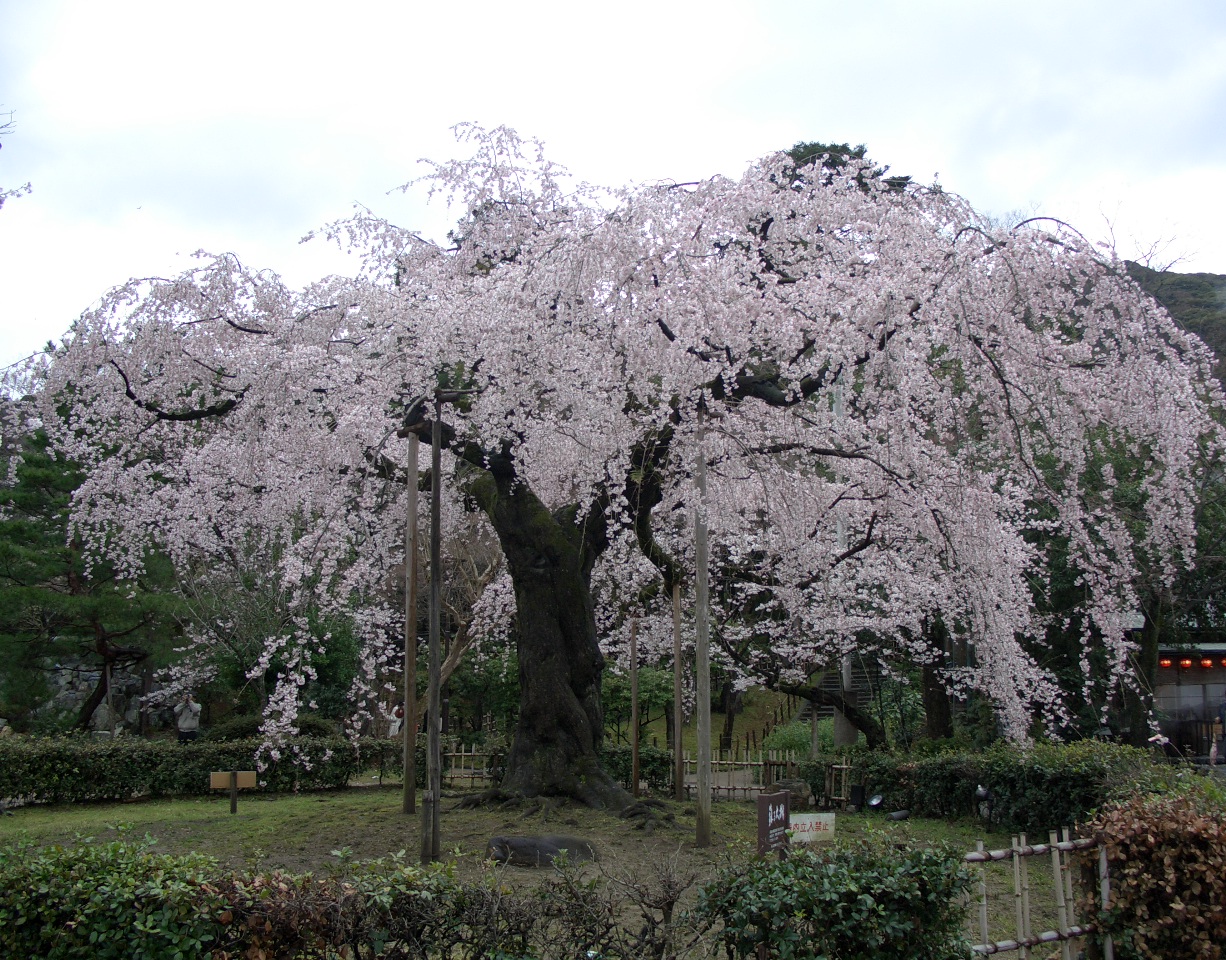
Maruyama Park stands as Kyoto's most famous night cherry blossom destination, where the legendary "Gion Weeping Cherry" - a magnificent 90-year-old, 12-meter-tall weeping cherry tree - becomes the centerpiece of elaborate evening illuminations. This historic park adjacent to the Gion district offers the quintessential Kyoto hanami experience.
The Legendary Weeping Cherry The park's iconic shidarezakura (weeping cherry) represents one of Japan's most photographed trees, its cascading branches creating natural curtains of pink and white blossoms. During nighttime illumination, the tree's ethereal silhouette against the darkness creates almost supernatural beauty that has inspired artists and poets for generations.
Cultural Atmosphere Traditional food stalls during cherry blossom season create festival atmospheres where locals and tourists mingle in celebration of spring's arrival. The proximity to Yasaka Shrine and Hanamikoji Street allows for comprehensive cultural experiences that extend hanami into broader explorations of traditional Kyoto.
Exclusive Dining The park houses high-end restaurants like "Saami," where guests can enjoy refined Kyoto cuisine while contemplating illuminated cherry blossoms through traditional architecture. This combination of culinary excellence and natural beauty represents luxury hanami at its finest.
Strategic Location Maruyama Park's position in the heart of Kyoto's traditional district makes it ideal for evening strolls that combine cherry blossom viewing with explorations of historic neighborhoods, traditional shops, and cultural sites that define Kyoto's unique character.
Practical Information:
- Night Illuminations: Throughout cherry blossom season
- Cultural Integration: Adjacent to Gion district, Yasaka Shrine
- Fine Dining: Restaurant Saami and other high-end establishments
- Best Timing: Early evening for optimal lighting
- Iconic Tree: 90-year-old Gion Weeping Cherry
- Access: 10-minute walk from Gion-Shijo Station
Koriyama Castle Ruins, Nara Prefecture
📍 Google Maps - Koriyama Castle Ruins
The 400-year-old Koriyama Castle Ruins offer a unique combination of historical gravitas and natural beauty, where cherry blossoms create stunning reflections in the preserved castle moats while hundreds of traditional lanterns illuminate evening hanami celebrations. This lesser-known destination provides authentic Japanese castle town atmosphere without the crowds of more famous locations.
Historical Significance Built by Toyotomi Hidenaga, Koriyama Castle's remaining stone walls and water-filled moats create atmospheric settings where cherry blossoms frame ancient architecture. The observation deck provides panoramic views of cherry blossoms spreading across the castle grounds and reflecting in the still water below.
Lantern Illumination During peak cherry blossom season, hundreds of traditional paper lanterns create soft, warm lighting that enhances both the historical architecture and the delicate blossom textures. This traditional illumination method creates more intimate, contemplative atmospheres compared to modern electric lighting systems.
Reflection Photography The preserved moats provide perfect mirror surfaces that double the visual impact of cherry blossoms and create symmetrical compositions ideal for photography. The combination of ancient stone foundations, still water, and overhanging blossoms creates uniquely Japanese imagery.
Practical Information:
- Historical Period: 400+ years of history
- Access: Walking distance from Kintetsu Koriyama Station
- Special Features: Traditional lantern illuminations
- Photography: Moat reflections, castle stone walls
- Season: Late March to early April
- Atmosphere: Intimate, historical, less crowded
Akashi Park, Hyogo Prefecture
Just five minutes from JR Akashi Station, Akashi Park combines the historical elements of Akashi Castle with approximately 1,400 cherry trees across expansive grounds. The park's boat rental facilities allow visitors to experience cherry blossoms from water level, while the castle's remaining structures provide dramatic architectural backdrops.
Castle Integration Akashi Castle's remaining towers and stone foundations create impressive historical contexts for cherry blossom photography, while the elevated positions offer panoramic views across the entire park during peak bloom. The contrast between 17th-century military architecture and delicate spring blossoms embodies the Japanese aesthetic of strength and beauty coexisting.
Water-Level Perspectives Rental boats allow visitors to experience cherry blossoms from unique vantage points on the park's ponds and waterways. This perspective reveals details and compositions invisible from land-based viewing, particularly the way overhanging branches create natural canopies above the water.
Urban Accessibility The park's proximity to Akashi Station makes it ideal for day trips from Osaka or Kobe, while its extensive facilities support full-day hanami celebrations without requiring extensive preparation or supplies.
Practical Information:
- Tree Count: Approximately 1,400 cherry trees
- Access: 5-minute walk from JR Akashi Station
- Special Activity: Boat rentals during season
- Historical Elements: Akashi Castle ruins and towers
- Season: Late March to early April
- Day Trip Potential: Easy access from Osaka/Kobe
Planning Your Kansai Cherry Blossom Adventure
Transportation Strategy
The Kansai region's excellent public transportation network makes cherry blossom touring remarkably efficient. Consider purchasing a Kansai Thru Pass for unlimited travel on private railways, subways, and buses, providing flexibility for multi-day hanami adventures across different prefectures.
Seasonal Timing
Peak cherry blossom season typically spans late March through early May, with variations based on elevation, species, and yearly weather patterns. Mount Yoshino's staggered blooming provides the longest viewing window, while urban parks like Osaka Castle offer more predictable timing but shorter peak periods.
Cultural Etiquette
Japanese hanami culture emphasizes respect for nature, cleanliness, and community consideration. Bring portable trash bags, avoid damaging trees or picking flowers, and be mindful of noise levels in contemplative spaces like temple grounds and historic sites.
Photography Considerations
Early morning light provides the best illumination for cherry blossom photography, while blue hour and night illuminations create dramatic atmospheres. Respect photography restrictions at temples and shrines, and be considerate of other visitors when positioning for shots.
Weather Preparation
Spring weather in Kansai can be unpredictable, with temperature variations and occasional rain showers. Layer clothing for temperature changes and consider light rain protection that won't interfere with photography equipment.
Conclusion: Creating Lifelong Hanami Memories
The Kansai region's cherry blossom destinations offer experiences that extend far beyond simple flower viewing - they provide windows into Japanese cultural heritage, opportunities for quiet contemplation, and settings for creating memories that last lifetimes. Each location presents unique combinations of natural beauty, historical significance, and cultural atmosphere that collectively represent the full spectrum of hanami experiences.
Whether seeking romantic strolls along historic paths, family-friendly picnic destinations, or enchanting evening illuminations, Kansai's cherry blossom locations provide perfect settings for understanding why sakura season holds such significance in Japanese culture. The accessibility by train, combined with the region's comprehensive tourism infrastructure, makes these experiences available to international visitors seeking authentic connections with Japanese traditions.
Plan your visit during peak season to witness these locations at their most spectacular, but remember that each offers unique beauty throughout the extended spring season. The memories created beneath cherry blossoms in Kansai become treasured souvenirs that capture not just the visual beauty of sakura, but the deeper spiritual and cultural significance that makes hanami one of Japan's most beloved seasonal celebrations.
Experience the magic of Kansai's cherry blossoms and discover why hanami season represents the heart of Japanese spring culture - where natural beauty, historical heritage, and community celebration create perfect harmony.
.jpg)
.jpg)
.jpg)
.jpg)
.jpg)
.jpg)